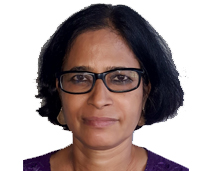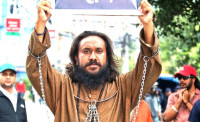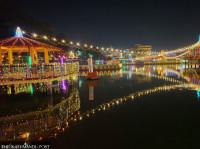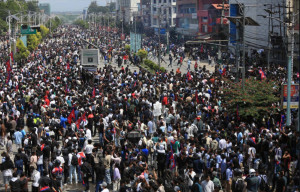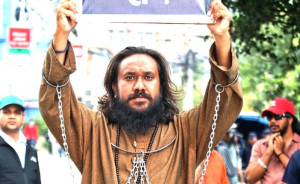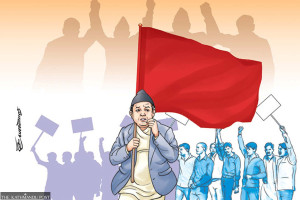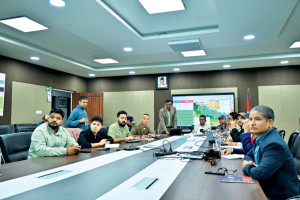Columns
Merry-go-round in Sri Lanka
Tamil politicians disagree on a political solution while Sinhala nationalists want to remove the 13th Amendment.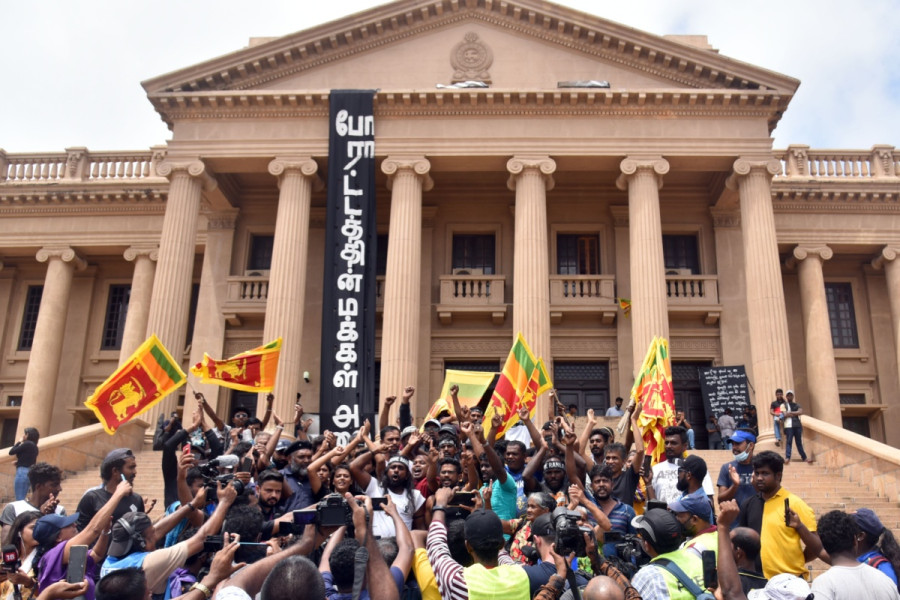
Smruti S Pattanaik
While discussing and debating the forthcoming Sri Lankan Presidential election scheduled for September 2024 and the implementation of the 13th Amendment, I asked my journalist friend Bala, who has spent more than two decades in that country, “What is new?”
“Pat,” he replied, “It is a merry-go-round.” Indeed, it is.
The debate on 13A—an amendment to the Sri Lankan constitution to implement the understanding between India and Sri Lanka to resolve what was then a decade-old Tamil insurgency, has never been outdated. It was reported that JS Jayewardene, the then President of Sri Lanka, compelled the legislators belonging to his party, the United National Party, to vote in favour of this amendment. This led to a severe difference between him and the then Sri Lankan Prime Minister Ranasinghe Premadasa.
The Liberation Tigers of Tamil Eelam (LTTE), who were fighting for a separate homeland, did not accept this 13A-created, truncated Provincial Council (PC). It resumed the fight against the Indian Peace Keeping Force (IPKF) that was deployed as a part of the 1987 Indo-Lanka Accord. Premadasa, whose only objective was to remove the IPKF, armed them. The IPKF returned to India in 1990 after Premadasa became president. While this became a lesson for India, an LTTE suicide bomber killed Premadasa in the May Day rally. Rest is history.
Yet, this truncated power of PCs has been at the centre of debates in all Presidential elections in Sri Lanka since the 1990s. In 2013, there was an attempt to abolish the PCs, but the Mahinda Rajapakse government did not get the support of all the PCs. His party could not pass the proposal in the Central Provincial Council ruled by his party. While the Tamils who believe in a negotiated settlement of the ethnic issue do not see PC as a solution, 13A is seen as the bottom line of any devolution after the elimination of LTTE in the final leg of counterinsurgency in 2009.
13A and 13A plus
Post-war, Mahinda Rajapakse, who said he would go beyond 13A—popularly known as 13A plus, a solution to the long pending ethnic crisis—reneged on his promise and started to label 13A as foreign-imposed and promised a “home-grown” solution. The solution appeared to be the economic development of the North—building roads, infrastructure, government, etc., with a government-piloted ethnic reconciliation that encouraged the Tamils and the Sinhalese to spend time with each other’s families. Yet, the majority Sinhalese population and clergy were against any ethnic accommodation, as the LTTE lost the war; thus, the Tamils lost their fight.
Devolution was a much-abused word. For the Tamils, it was a partial fulfilment of their political aspiration; for the Sinhalese, it meant eventual secession, and any demand by the Tamils meant “re-emergence of the idea of Tamil Eelam”. The post-war Tamil community was under intense surveillance by security forces. They were not allowed to mourn their families and relatives killed in the last phase of the war as that was tantamount to mourning “terrorists”.
Militarisation of the North continued even after the defeat of the LTTE. The Sinhala Buddhist colonisation with the patronage of the Army started in the Tamil-dominated North of Sri Lanka. Buddha’s statues were placed under the Bodhi tree to reclaim the Sinhala heritage of the North and to deny exclusivity to Tamils’ presence in this area. In the changed circumstances, devolution was Tamils’ only hope.
President Rajapakse established the Parliamentary Select Committee (PSC) to discuss 13A and suggest addressing political grievances. The Tamil National Alliance (TNA), a coalition of five Tamil parties that represented the Tamils, refused to be part of the PSC as they realised this was a ploy to reject their demands given the majoritarian composition. Similarly, the main opposition, the United National Party (UNP) and Sri Lankan Muslim Congress, opposed any dilution of 13A. Yet since 1987, slowly and steadily, the limited powers of PCs eroded further. For example, in 1992, President Premadasa brought district Secretary Gram Sevaks and government agents in the province under the control of the government in Colombo. Later, the Supreme Court demerged the North and East provinces and considered the “traditional homeland of Tamils” as the merger under the 1987 Accord was not followed by a referendum. No Sri Lankan politician can ignore the Sinhala Buddhist sentiments and think of winning the election. Several proposals—the devolution proposal of Chandrika Kumaratunge, the 2000 draft constitution and Mangala Moonasinghe’s report—also recommended devolution of power.
Given the Indian pressure post-war, the government decided to hold an election to the Northern Provincial Council after 25 years. Interestingly, some posters pasted before the PC election asked voters whether they wanted to choose guns, indirectly telling the voters that victory of the TNA would mean the return of violence. The party won overwhelmingly, and Chief Minister CV Wigneswaran, former justice, strongly advocated 13A and said it was the only pact out of several signed between the Tamils and governments that had survived due to India’s backing. As the government in Colombo was not in the mood to implement 13A, some of the constituent parties of the TNA took a hardline stand.
In Sri Lanka, the debate is about the full implementation of the 13th Amendment, and it has not progressed beyond that point because scuttling the power of PCs is always on the cards to satisfy the majoritarian impulse. While the Northern Province has highlighted the importance of giving the police and land power to the provinces, other PC chief Ministers have towed their party line.
Fast-forward
In 2016, the presidential election resulted in Maithripala Sirisena’s election to office after defeating Mahinda Rajapakse. Several reforms were proposed by the unity government, also known as the Yahapalana government. However, given the vocal ultra-nationalist opposition to the Provincial Council, the Constitutional Reform Committee could not make any moves. For example: The reform committee suggested including the Sinhala words aekiya raajya and orumiththa nadu in Tamil to signify the country’s unitary status. Some even suggested the insertion of ‘undivided and indivisible’ to ally the unfounded fear of secession of Tamils through devolution. The fear is politically propagated and sustained by nationalist politicians like the National Freedom Front (NFF), Pivithuru Hela Urumaya (PHU), Mawbima Janatha Party (MJP), JHU and also some Army veterans close to former President Gotabaya Rajapakse.
India has always insisted on the full implementation of 13A and the need to hold PC elections. The current president, Ranil Wickremesinghe, also supports this proposal as a way out of the current impasse over 13A. In his tour to the Northern Provinces, he reiterated his position on fully implementing the amendment. Not to be left out, Sajith Premadasa of the Samagi Jana Balavegaya (SJB), also a Presidential aspirant, said that if voted to power, he will execute 13A. As the presidential election nears, the Sri Lanka Podujana Peremuna of the Rajapakses, which is yet to announce its presidential candidate, is weighing its options as the ultra-nationalist parties supported by Buddhist clergy are rallying against the implementation of any devolution.
This re-emergence of 13A in the political debate as the presidential election nears is not new. At the same time, all political parties know that the support of Tamils would make a difference. While the Tamil political parties remain divided over the nature of the political solution, the Sinhala nationalists want to remove the 13th Amendment. Between these two extremes—no devolution and 13A plus—it is merry-go-round on the crucial question of Tamil political aspiration in Sri Lanka.




 17.12°C Kathmandu
17.12°C Kathmandu